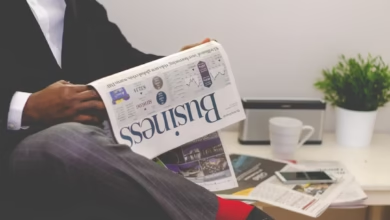Inflation Unveiled: Navigating Its Impact on Purchasing Power, Investment Strategies, and Economic Stability

Inflation is a complex economic phenomenon that significantly influences consumer behavior, financial markets, and overall economic stability. As prices rise, the purchasing power of consumers diminishes, prompting a reevaluation of spending habits and investment strategies. The interplay between inflation and interest rates further complicates the landscape, affecting everything from mortgage rates to savings returns. In this article, we will explore how inflation impacts consumer purchasing power, delving into the mechanisms by which it alters financial decision-making and economic conditions.
We will also examine effective strategies for protecting investment portfolios against the erosive effects of inflation, considering various asset classes and their unique responses to rising prices. Historical examples of hyperinflation will provide valuable lessons for navigating today’s economy, while an analysis of central banks' monetary policies will shed light on their role in combating inflation. Additionally, we will discuss how supply chain disruptions contribute to inflationary pressures and the resulting effects on wages and employment. By understanding these dynamics, consumers and investors can better equip themselves to face the challenges posed by inflation in a rapidly changing economic landscape.
- 1. Understanding Inflation: Its Effects on Consumer Purchasing Power and Economic Stability
- 2. Navigating Financial Markets: Strategies for Protecting Your Portfolio Against Inflation
1. Understanding Inflation: Its Effects on Consumer Purchasing Power and Economic Stability
Inflation is often defined as the rate at which the general level of prices for goods and services rises, eroding purchasing power over time. When inflation occurs, each unit of currency buys fewer goods and services, leading consumers to feel the pinch in their daily lives. For instance, if inflation is at 3% annually, a basket of goods that costs $100 today will cost $103 a year from now. This gradual increase can significantly impact household budgets, particularly for essential items like food and fuel, forcing consumers to adjust their spending habits.
The effects of inflation extend beyond just consumer purchasing power; they can also influence economic stability. When inflation is moderate, it can indicate a growing economy. However, when it accelerates uncontrollably, it can lead to uncertainty and decreased consumer confidence. As prices rise, consumers may delay purchases in anticipation of better prices or adjust their spending to focus on necessities, which can slow down economic growth.
Moreover, inflation can disproportionately affect lower-income households, as they tend to spend a higher percentage of their income on basic needs. This disparity can deepen social inequalities, as wealthier individuals may have more resources to absorb rising costs or invest in assets that outpace inflation, such as real estate or stocks.
Understanding inflation and its effects on consumer purchasing power is crucial for individuals and policymakers alike. By recognizing how inflation impacts economic behavior and stability, strategies can be developed to mitigate its adverse effects, ensuring that both consumers and the economy can thrive even in fluctuating price environments.
Inflation significantly influences consumer purchasing power, as rising prices erode the value of money over time. When inflation occurs, each unit of currency buys fewer goods and services, leading consumers to adjust their spending habits. For instance, if the inflation rate is higher than wage growth, individuals may find it increasingly difficult to maintain their standard of living, as their income does not keep pace with the cost of essential items. This can lead to a shift in consumption patterns, where consumers prioritize necessities over discretionary spending, ultimately affecting economic growth.
The relationship between inflation and interest rates is complex. Central banks often respond to rising inflation by increasing interest rates to cool off economic activity and prevent the economy from overheating. Higher interest rates can dampen consumer spending and borrowing, as the cost of loans increases. Conversely, when inflation is low, central banks may lower interest rates to stimulate spending and investment. This interplay is crucial for managing economic stability.
To protect portfolios from inflation, investors can adopt various strategies. One common approach is diversifying investments across different asset classes, such as real estate, stocks, and commodities, which historically tend to perform well during inflationary periods. Additionally, inflation-protected securities, like Treasury Inflation-Protected Securities (TIPS), can provide a safeguard as their principal increases with inflation.
Inflation affects various asset classes differently. Real assets, such as real estate and commodities, often appreciate in value during inflationary periods, serving as a hedge. In contrast, fixed-income securities may lose value as their returns become less attractive relative to rising prices. Equities can also be influenced by inflation, as companies may pass on increased costs to consumers, potentially preserving profit margins.
Historical examples of hyperinflation, such as those experienced in Weimar Germany or Zimbabwe, provide critical lessons on the importance of maintaining monetary stability. These episodes demonstrate how unchecked inflation can lead to economic collapse, social unrest, and a loss of confidence in currency, emphasizing the need for sound fiscal and monetary policies.
Central banks play a pivotal role in combating inflation through monetary policy. By adjusting interest rates, conducting open market operations, and managing reserve requirements, central banks aim to control the money supply and stabilize prices. Effective communication and transparency in policy decisions are also essential for managing public expectations regarding inflation and maintaining confidence in the economy.
Supply chain disruptions have emerged as significant drivers of inflation, particularly in recent years. Factors such as natural disasters, geopolitical tensions, and pandemics can lead to shortages of goods, driving prices up. These disruptions highlight the interconnectedness of global supply chains and the impact they can have on inflation rates.
Lastly, inflation's impact on wages and employment is multifaceted. While rising prices can erode purchasing power, they may also prompt employers to increase wages to attract and retain talent. However, if wage growth does not keep pace with inflation, workers may still feel the pinch. Additionally, persistent inflation can lead to uncertainty in the job market, influencing hiring decisions and overall employment rates. Understanding these dynamics is crucial for navigating the challenges posed by inflation in today's economy.
2. Navigating Financial Markets: Strategies for Protecting Your Portfolio Against Inflation
Inflation can erode the purchasing power of savings and investments, making it essential for investors to adopt strategies that protect their portfolios. One effective approach is to diversify investments across asset classes that traditionally perform well during inflationary periods. This includes real assets such as real estate and commodities, which tend to increase in value as inflation rises.
Another strategy is to consider inflation-protected securities, such as Treasury Inflation-Protected Securities (TIPS) in the United States. These bonds adjust their principal value with inflation, providing a safeguard for investors against rising prices. Additionally, equities in sectors like consumer staples, utilities, and healthcare often demonstrate resilience during inflationary times, as these industries can maintain margins and pass costs onto consumers.
Investors may also explore commodities, such as gold and oil, which historically serve as hedges against inflation. Gold, in particular, is viewed as a store of value that often appreciates when inflation fears are high. Furthermore, some investors may choose to allocate a portion of their portfolios to inflation-linked funds or exchange-traded funds (ETFs) that focus on inflation-sensitive assets.
Staying informed and agile is crucial in navigating inflationary environments. Regularly reviewing and adjusting investment strategies based on economic indicators and inflation forecasts can help investors respond proactively to changing conditions. Lastly, maintaining a long-term perspective is essential; while inflation can create volatility in the short term, historically, markets tend to recover and grow over time, making it important to avoid reactionary decisions.
In conclusion, inflation is a multifaceted economic phenomenon that significantly influences consumer purchasing power, investment strategies, and overall economic stability. As we have explored, rising prices can erode the value of money, prompting consumers to adjust their spending habits and prompting central banks to implement monetary policies aimed at stabilizing the economy. Additionally, understanding the relationship between inflation and interest rates is crucial for investors seeking to protect their portfolios; various asset classes respond differently to inflationary pressures, necessitating a strategic approach to asset allocation.
Historical examples of hyperinflation serve as cautionary tales, reminding us of the profound and often devastating effects unchecked inflation can have on economies and societies. Supply chain disruptions—exacerbated by global events—further complicate the inflation landscape, impacting the availability and pricing of goods. Moreover, the implications for wages and employment underscore the interconnectedness of inflation with broader economic health.
Ultimately, while inflation poses challenges, it also offers opportunities for informed investors to adapt and thrive. By staying informed and employing effective strategies, individuals can navigate the complexities of inflation and its effects on their financial well-being. As we move forward, remaining vigilant and proactive will be essential in mitigating the risks associated with inflation and securing a stable economic future.





